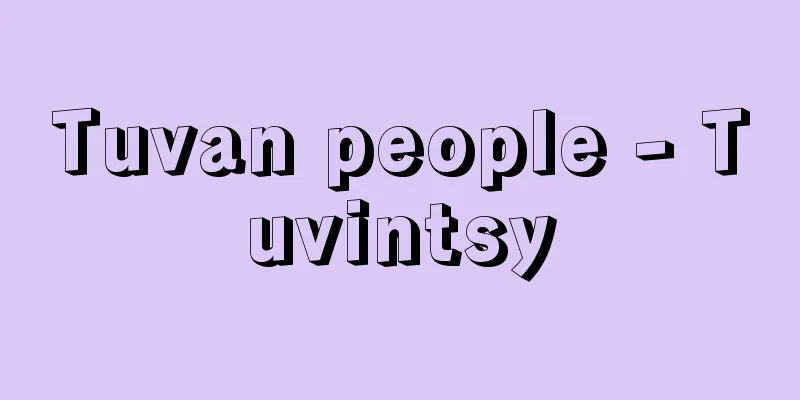Friendship Society - Yuaikai

|
The predecessor of the Japan General Federation of Labor. Founded on August 1, 1912 (Taisho 1) by 15 workers with Suzuki Bunji, a law graduate from Tokyo Imperial University, as chairman, it was a labor organization that aimed to promote mutual aid and self-cultivation, with a stance of labor-management (capital-capital) cooperation. Its platform advocated mutual love and assistance, development of knowledge, technological progress, and improvement of status, and it had a modest start, with professors from Tokyo University and influential people in academia, government, politics, and business as advisors and councilors. At the time, it was just after the execution of Kotoku Shusui and others in the High Treason Incident, socialism was banned, labor unions had almost disappeared, and workers were despised as a lower class, so the formation of the association encouraged workers. With the advancement of Japan's capitalist industry during World War I, and the resulting increase in the number of workers and modernization, the association became a pioneer in the revival of labor unions, and by April 1918 it had grown to 120 branches and approximately 30,000 members. Influenced by events such as the Russian Revolution (1917) and the Rice Riots (1918), the rise of popular uprisings, the founding of the International Labor Organization (ILO) and the announcement of the Labor Charter (1919), workers' class consciousness grew, and in September 1919 the organization changed its name to the Dai-Nippon Rodo Sodomei Yuai-kai, changed the chairman's dictatorship to a board of directors' consensus system, and listed 20 workers' demands (such as labor union freedom). It continued to become more of a labor union and more militant, dropping the character "Dai" in October 1920 and dropping the word "Yuai-kai" in October 1921, growing into the Nihon Rodo Sodomei as a labor union in both name and reality. In November 1922, it launched its official newspaper, Yuai Shimpo, and in November 1928, it changed its title to a monthly magazine, Labor and Industry, and in January 1920, it again changed its title to Labor. In June 1941, the union also became the first in Japan to establish a women's division and publish its newsletter, "Friendship Women." [Hiroshi Matsuo] "The Sōdōmei 50-Year History Publication Committee ed., 'Sōdōmei 50-Year History, Volume 1' (1964)" ▽ "Suzuki Bunji, 'Twenty Years of the Labor Movement' (1931, Ichigensha)" ▽ "Okochi Kazuo and Matsuo Hiroshi, 'The Story of Japanese Labor Unions in the Taisho Period' (1965, Chikuma Shobo)" [Reference] |Source: Shogakukan Encyclopedia Nipponica About Encyclopedia Nipponica Information | Legend |
|
日本労働総同盟の前身。1912年(大正1)8月1日、東京帝国大学卒業の法学士鈴木文治(ぶんじ)を会長に15人の労働者によって結成された、労使(資)協調主義の立場にたち、共済・修養を目的とした労働団体。綱領には相愛扶助、識見開発、技術進歩、地位改善を掲げ、東大教授や学・官・政・財界の有力者を顧問・評議員にいただくなど穏和な出発をした。当時は大逆事件で幸徳秋水らが処刑された直後で、社会主義は禁圧され、労働組合もほとんど消滅し、労働者は下層社会として軽侮されていた時代なので、会の結成は労働者を勇気づけた。第一次世界大戦を通じての日本の資本主義産業の躍進、したがって労働者の増加、近代化によって、同会は労働組合復活の先駆となり、18年4月には120支部、会員約3万人に発展した。 ロシア革命(1917)、米騒動(1918)などの民衆蜂起(ほうき)の高揚、ILO(国際労働機関)の創設と労働憲章の発表(1919)などに影響されて労働者の階級的自覚は高まり、1919年9月には大日本労働総同盟友愛会と改称し、会長独裁制を理事合議制に改め、主張として労働者の要求20項目(労働組合の自由など)を掲げるに至った。その後も労働組合化・戦闘化の度を加え、20年10月には「大」の字を去り、21年10月には「友愛会」の文字も捨て、名実ともに労働組合としての日本労働総同盟に成長した。なお、12年11月機関紙『友愛新報』を創刊、14年11月には月刊誌『労働及産業』と改題、20年1月にはさらに『労働』と改題した。また16年6月には日本の労働組合で初めて婦人部を設け、機関誌『友愛婦人』を発刊した。 [松尾 洋] 『総同盟五十年史刊行委員会編・刊『総同盟五十年史 第一巻』(1964)』▽『鈴木文治著『労働運動二十年』(1931・一元社)』▽『大河内一男・松尾洋著『日本労働組合物語 大正』(1965・筑摩書房)』 [参照項目] |出典 小学館 日本大百科全書(ニッポニカ)日本大百科全書(ニッポニカ)について 情報 | 凡例 |
<<: Friendly society - Yuaikumiai (English spelling)
Recommend
Desert - desert (English spelling)
A place where precipitation is so little that pla...
business finance
…To carry out its activities, a company must rais...
Institoris, H. - Institoris
…Born in Rheinfelden, died in Strasbourg. From 14...
Tokio Yokoi
A Protestant Christian leader during the Meiji an...
Castello - Castello
…Since the 12th century, Venice has been divided ...
Instant Photography
A photographic system that allows you to obtain an...
Power (English spelling) - power
The product of multiplying a number, variable, exp...
"Countryside Zhuangzi" - Countryside Cleaning
…Especially in the Edo period, Zhuangzi-like ligh...
Kaifuchu
… [Tadao Yokota] [Kofu Castle Town] A castle town...
Letter of Control
In ancient and medieval times, this was a document...
FPC - FPC
Flexible printed circuit Source: About Shogakukan ...
Mackay, JW
...In Spanish, it means "good weather,"...
feudum
… [Definition and Usage] The word "feudal&qu...
Kiwi - Kiwi (English spelling)
A general term for birds belonging to the order S...
Gopāla (English spelling) Gopala
...a dynasty that ruled Bengal, India, from the m...









